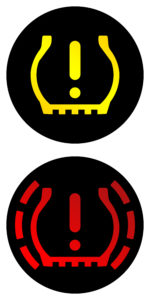Maintaining Your Vehicle’s Tires: A Comprehensive Guide
Maintaining Your Vehicle’s Tires: A Comprehensive Guide
If you own a vehicle, whether it’s cruising through city streets or tackling off-road terrains, chances are it comes with a set of tires. Auto service and tire shops diligently maintain tire records, focusing on correct rotation patterns, optimal air pressure, and, most importantly, ensuring sufficient tread life for safety. The frequency of tire rotation can sometimes be unclear, but it’s a critical aspect of maintaining your vehicle’s tires. Kelly Blue Books general guideline for most cars, trucks, and SUVs is to rotate tires every 3,000 to 5,000 miles or every six months, ideally coinciding with oil changes. Neglecting tire rotation can lead to unexpected and potentially hazardous situations.
Key Insights to Address Vehicle Handling, Gas Mileage, and Performance Issues
If you’ve observed your vehicle pulling to one side, experiencing reduced gas mileage, or undergoing changes in handling, it could be due to incorrect tire pressure. Maintaining the right PSI (Pounds per Square Inch) is crucial, and these issues can arise from both under-inflated and overinflated tires. Knowing how to check tire pressure is a valuable skill that can prevent such problems. Many modern vehicles provide real-time tire pressure information through the driver information center. The Tire Pressure Monitor System (TPMS) continuously monitors PSI, utilizing small sensors on the air fill valves. Refer to your owner’s manual, check the tire sidewalls, or locate the tire pressure information sticker on the driver’s side door sill to determine the recommended pressure for your tires. Regular tire pressure checks contribute to a smoother and safer driving experience.
Decoding Warning Lights: What does it mean?

When your tires lack the correct PSI, a warning icon will illuminate on your dashboard, signaling an immediate need for pressure adjustment. In the absence of a Tire Pressure Monitoring System (TPMS), it’s prudent to keep a manual tire pressure gauge in your glove box or center console. Regular pressure checks, ideally monthly, become crucial, especially before road trips or significant temperature fluctuations. Cold weather typically leads to lower tire pressure, while warmer conditions may cause higher pressure. If you observe the need to inflate a specific tire more frequently, it could indicate a puncture. While some punctures can be safely repaired, prompt attention is essential to prevent uneven tread wear and minimize the risk of further tire damage. Addressing punctures swiftly ensures a smoother and safer driving experience.
Determining whether you need new tires can be done efficiently with a tire depth gauge or the straightforward coin test. A tire depth gauge measures from the deepest part of your tire’s grooves to the tops of the tread block. If you lack a gauge, the coin test involves placing a coin, such as a quarter, with Honest Abe’s head upside down in the tread groove. If the tread covers past the top of his head, your tires are in good shape. However, if the tread is below 2/32 of an inch (below the former president’s hairline), immediate replacement is essential. For a quick check, use a quarter, ensuring that the tread is above Mr. Washington’s head. Once tread depth reaches 4/32 of an inch, the distance required to stop significantly increases, indicating the need for impending replacement. Besides monitoring tread life, it’s crucial to inspect for any bubbles, cracks, or unexpected separations to prevent potential tire blowouts. Regular checks ensure optimal safety and performance.
Revitalize Your Ride: Visit the Auto House Service Bay Today!
Auto House offers comprehensive ASE Certified Auto Repairs and Maintenance at a better price than traditional dealerships! No matter where you bought your car, we follow the Golden Rule and treat everyone fairly and honestly. See for yourself how maintaining your vehicle’s tires might just be something you keep up with moving forward.
Choose Auto House for superior auto care at our Tempe, Scottsdale, Tucson and Phoenix locations. Our ASE Certified technicians are expertly trained by leading automakers, ensuring top-notch repairs and maintenance for European and Domestic vehicles. Experience fair and honest service that protects your investment and prioritizes your safety on the road.
